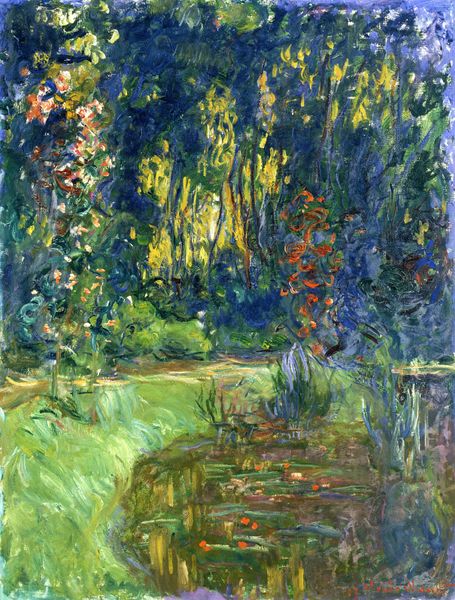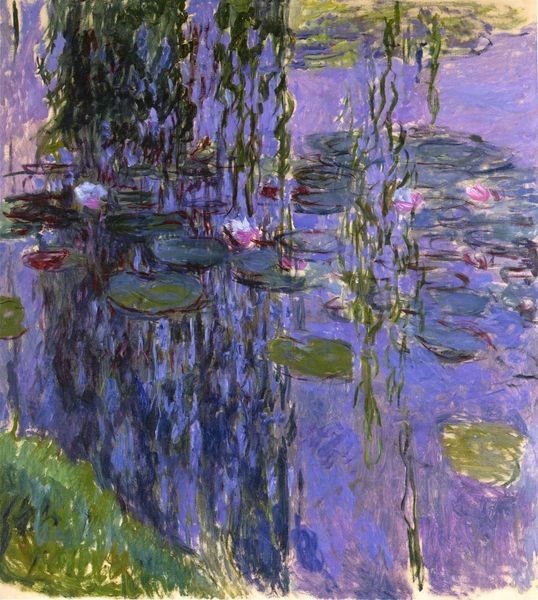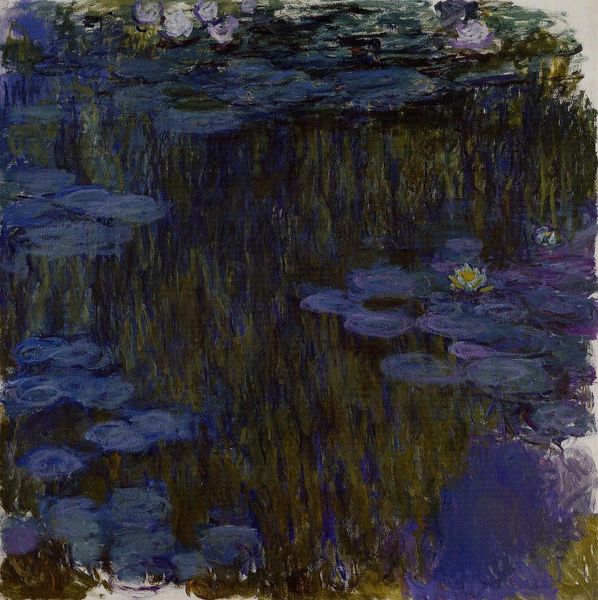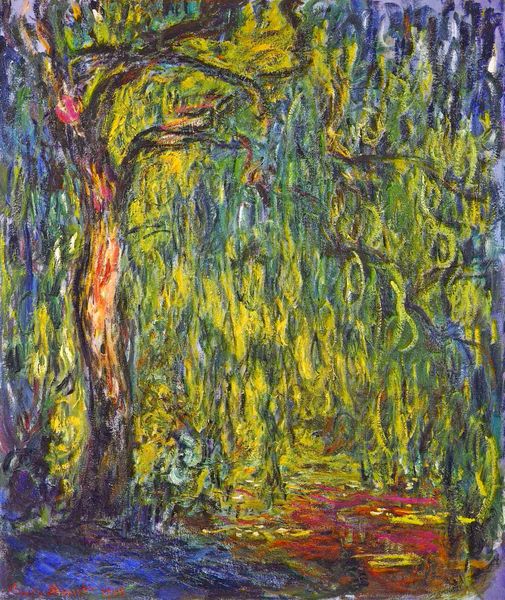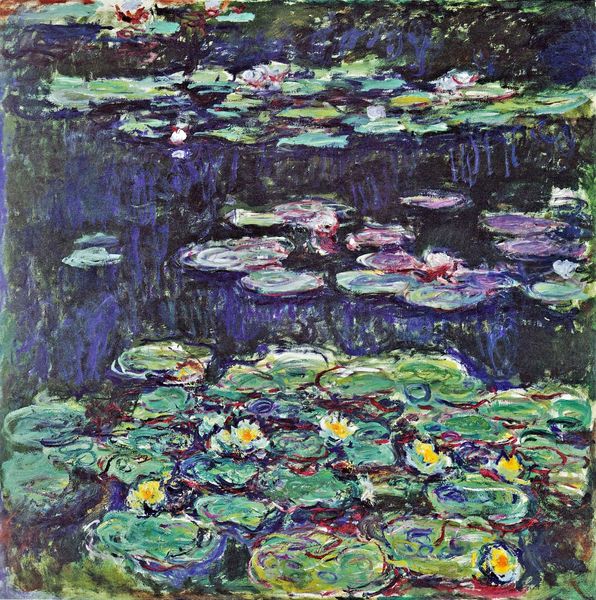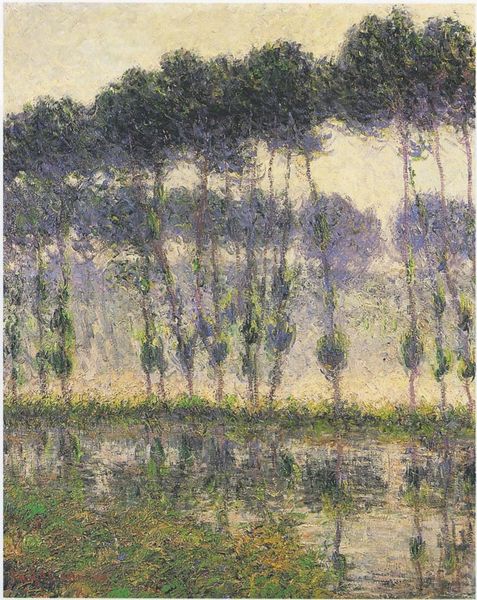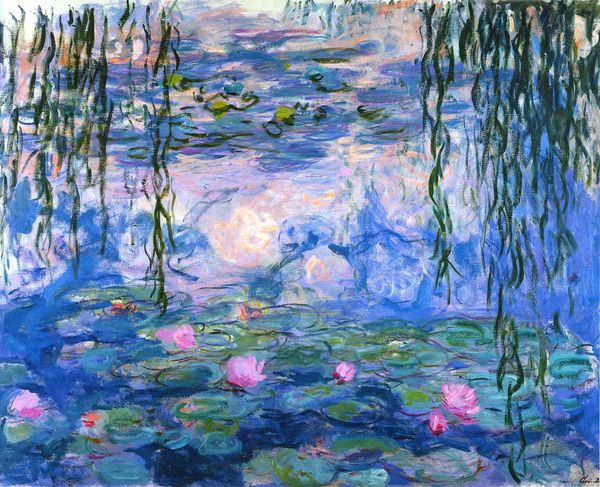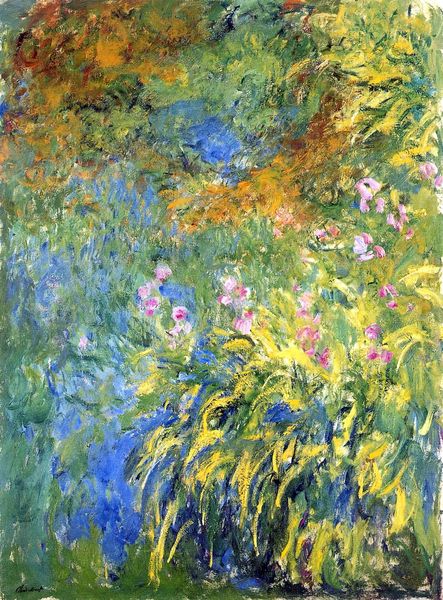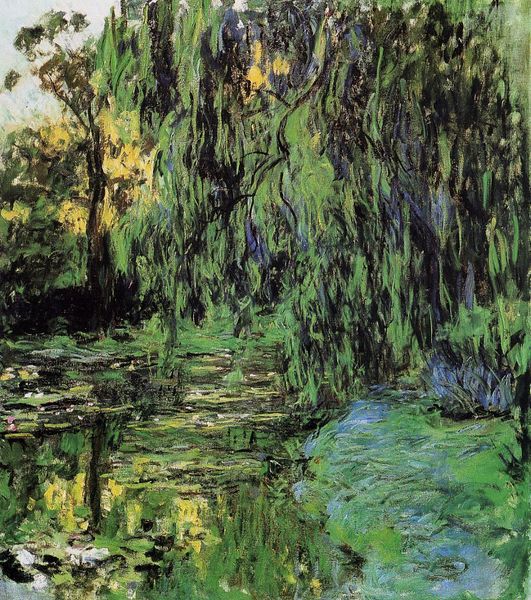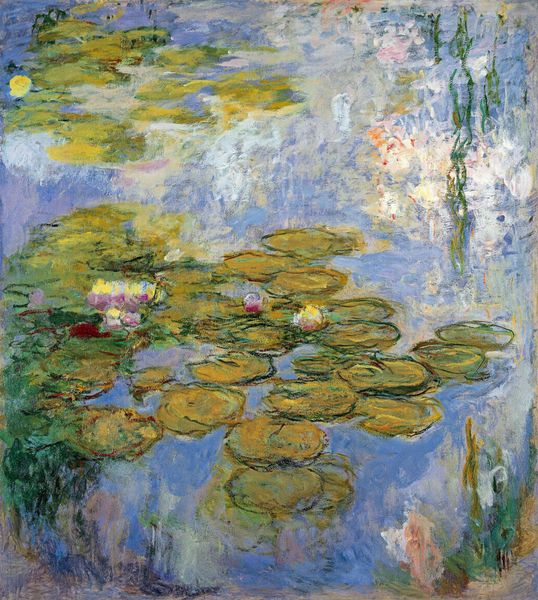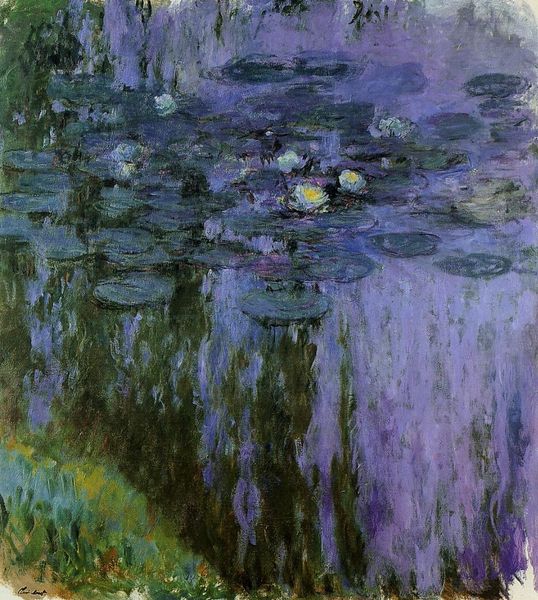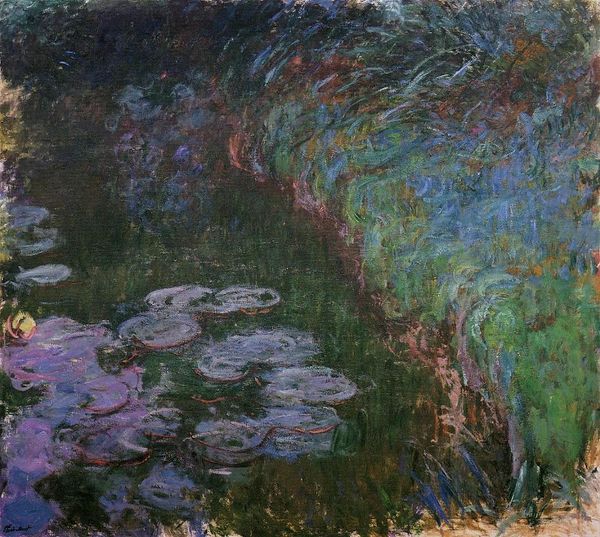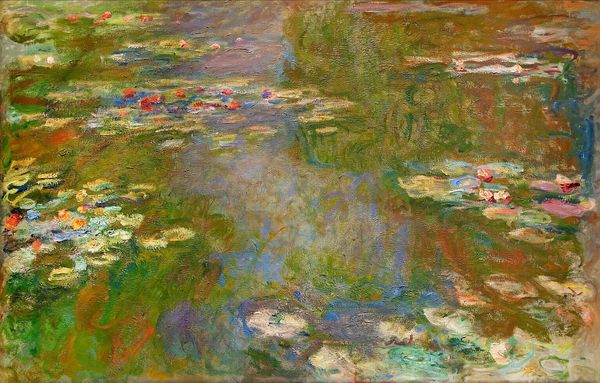
Copyright: Public domain
Curator: Look at the colors! Deep blues, greens, some mauve… it almost feels underwater. Editor: Indeed, the scene rendered here by Claude Monet circa 1919 depicts 'Weeping Willow and Water-Lily Pond'. Curator: Knowing it's Monet makes me consider the physical process of creating these canvases at Giverny; those famous gardens meticulously cultivated. What kind of tools, support staff, and specific pigment formulations were used to achieve this shimmering effect? The materials themselves must tell a story of late 19th and early 20th century commodity culture. Editor: It's a fascinating insight! Beyond just material composition, the image itself enters the world politically laden. Monet paintings had already become a symbol of national pride and even commodity themselves by the time that Monet made this later painting in his series. They decorated opulent homes. Curator: And, how the water lilies were actually grown would've involved the work of specific agricultural laborers; how were these workers positioned, what compensation was provided, who even has access to appreciate art like this? Editor: Exactly! What is included is only Monet's view: Monet made his estate his public and political contribution. One could analyze his position in the system that allowed the painting to be created, shown, sold. To build, in essence, this public image. Curator: It’s a sharp point to be made that his labor power shaped the perception of art, especially that of ‘impressionist’ paintings! His perspective from wealth to craft shaped both artistic interpretation and legacy itself. Editor: Very true! Contemplating the sociopolitical climate as well as his own celebrity certainly colors how one understands this late Monet piece, doesn't it? Curator: Absolutely! Editor: I hadn't really considered how this canvas spoke volumes about the cultural history, yet now that all makes sense to the political system. Curator: And I hadn’t placed enough importance on Monet’s own history of labor as the bedrock of high-end cultural values, so I am grateful for that contextualization!
Comments
No comments
Be the first to comment and join the conversation on the ultimate creative platform.
